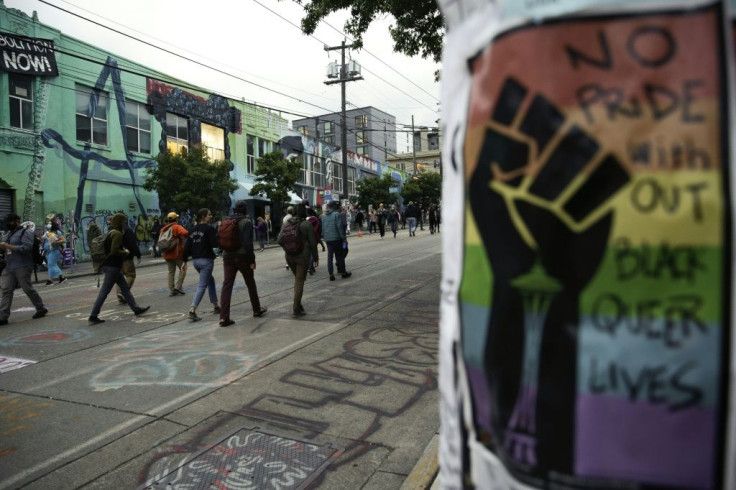Seattle Police Declare Riot At Protests, Arrest 45

The Seattle Police Department declared a riot on Saturday afternoon after a day of peaceful Black Lives Matter protests turned to violent clashes leading to 45 arrests and 21 police officers injured in the city's Capitol Hill neighborhood.
Police used flash bangs and pepper spray in the former protest zone, which covers several blocks. According to police, the crowd of around 5,000 on Saturday night smashed windows, lit constructions trailer on fire, set fire to a coffee shop, and blew a hole through a wall at the department’s East Precinct.
“At this point, we declared the event to be a riot, and several orders to disperse were given,” the Seattle police chief Carmen Best said at a press conference.
Roughly 2,000 people had reportedly gathered earlier on Saturday afternoon to march through Capitol Hill in protest of police brutality. The Seattle demonstration was considered an act of solidarity with daily protests in Portland, Oregon.
Portland has recently entered the national spotlight for the harsh tactics employed by police on protestors. Despite a ban by the city on the use of tear gas on peaceful crowds, police have nonetheless used the riot control tool extensively, drawing intense criticism.
Portland police officials attempted to explain their actions, stating the gas was used to combat “anarchists” using the cover of protests to commit illegal acts and threaten the lives and health of officers. They claimed that the officers in the field knew who these individuals were, but did not give any specifics, and said that it would have been unsafe for them to enter the crowds and remove these supposedly dangerous individuals.
President Trump has also deployed federal forces to the city to arrest individual protestors and take them away in unmarked vehicles. This tactic has drawn sharp critique and comparisons to fascist “secret police.” Despite this, Trump has threatened to deploy the same tactics in Chicago.
Protests outside the Portland courthouse have become a nightly occurrence, with police frequently declaring them a riot to give clearance for the use of tear gas. These harsh tactics have drawn further support from the community, with nurses in scrubs, mothers with signs, and veterans forming human barricades between protestors and police.
“Portland is leading,” said Chantelle Hershberger, an organizer with Refuse Fascism. “They’re showing what it looks like to stay in the streets despite police oppression, despite the federal forces being sent in. This kind of energy is actually what’s needed.”
© Copyright IBTimes 2025. All rights reserved.





















